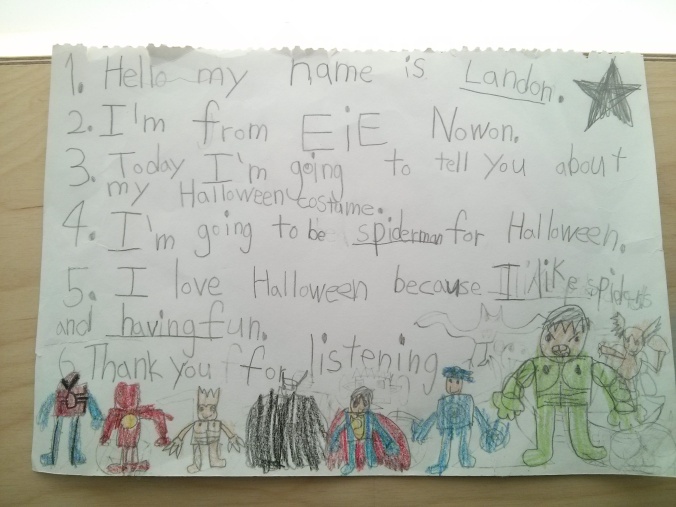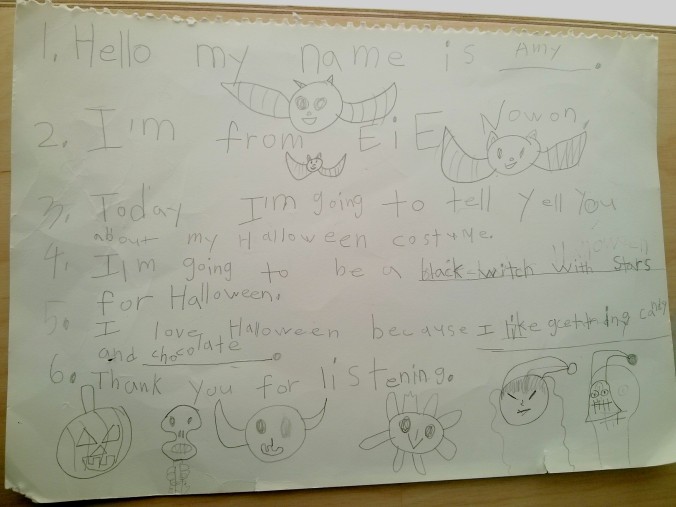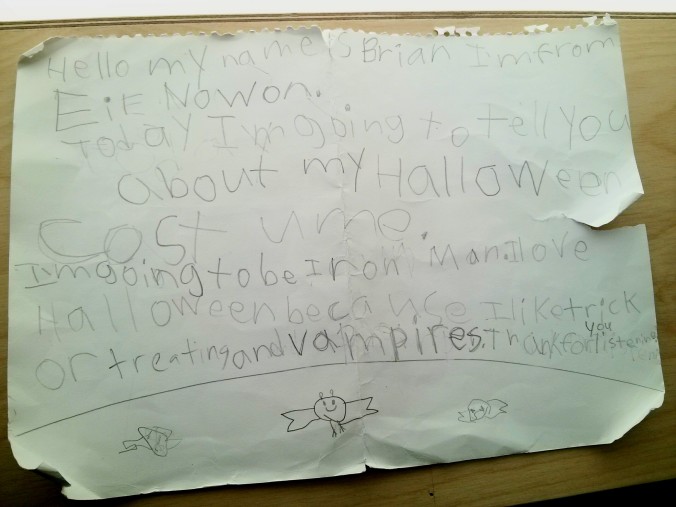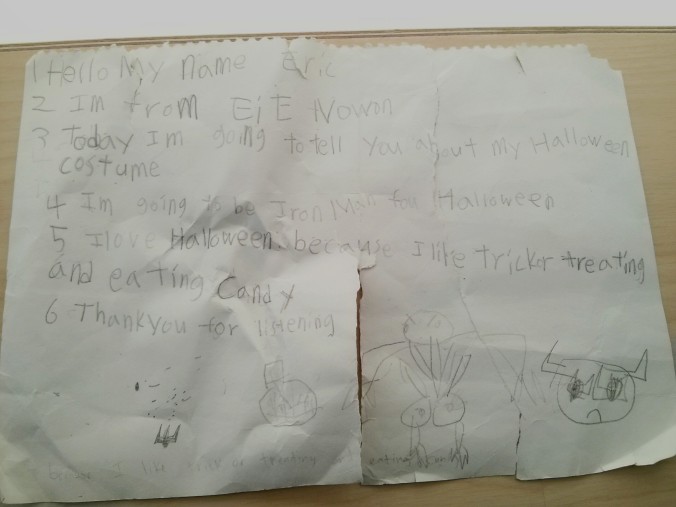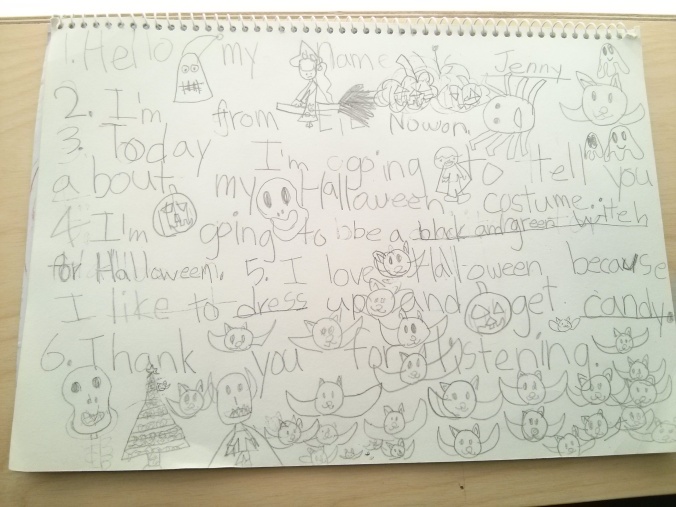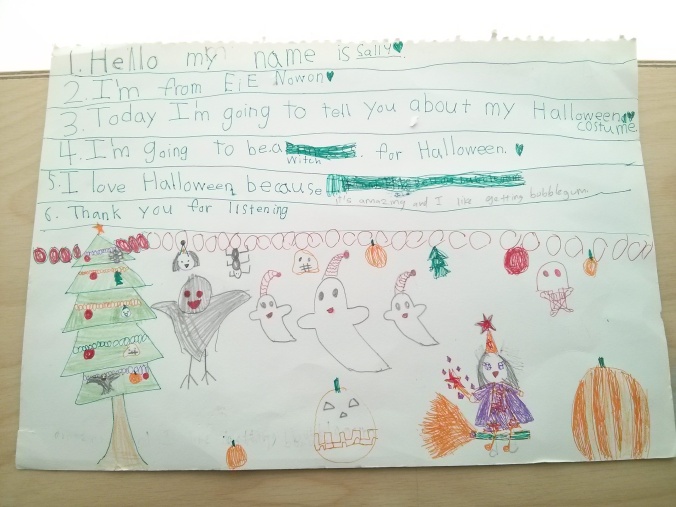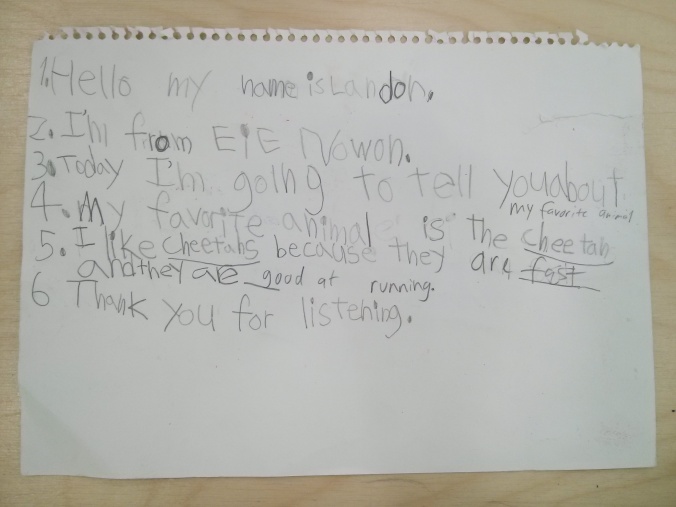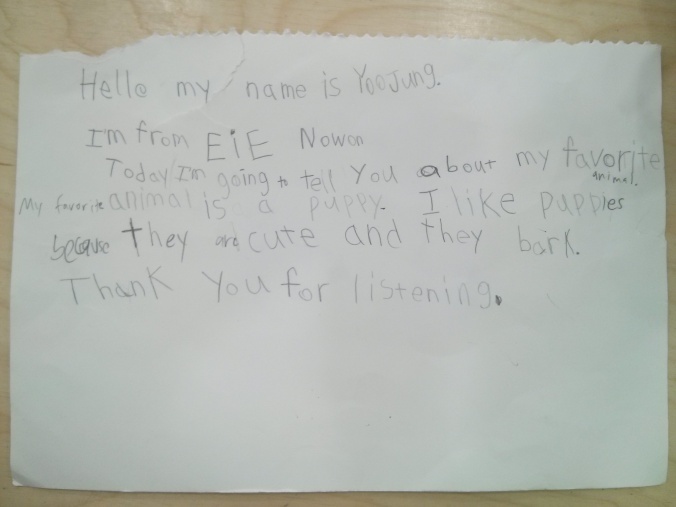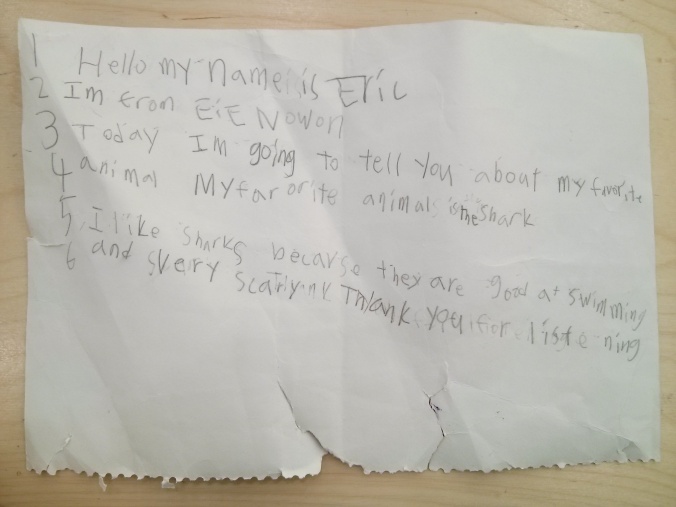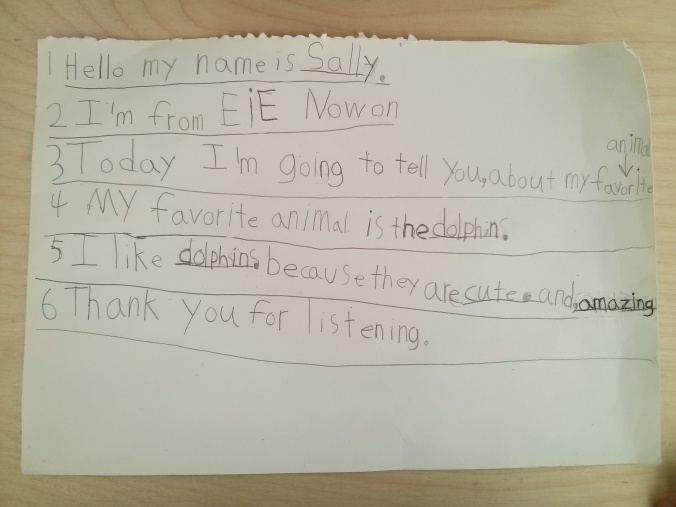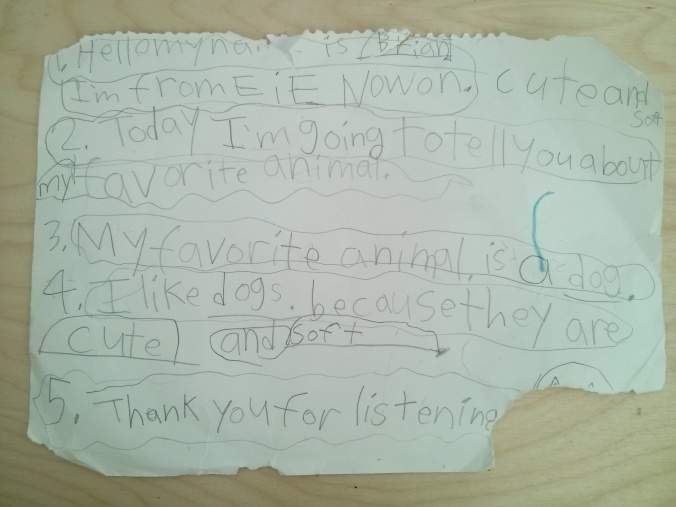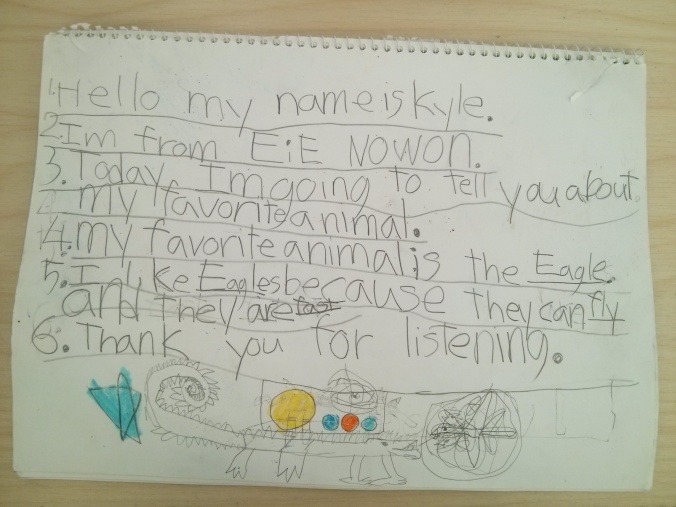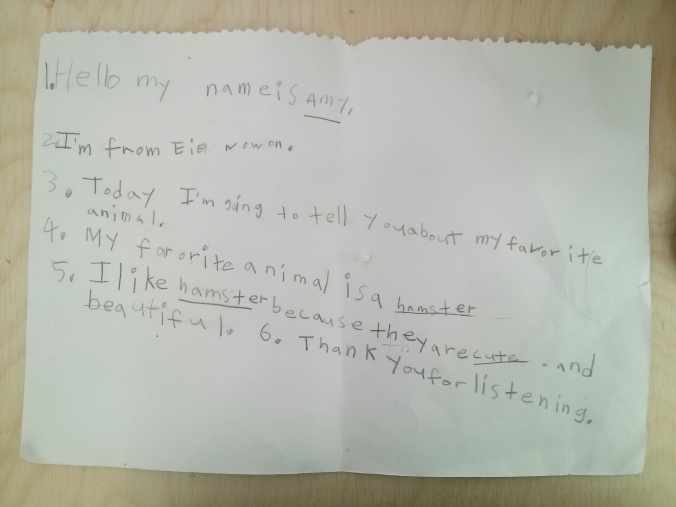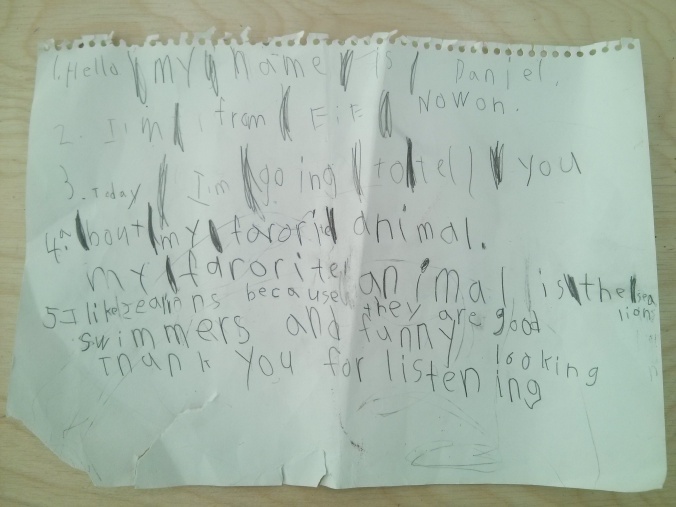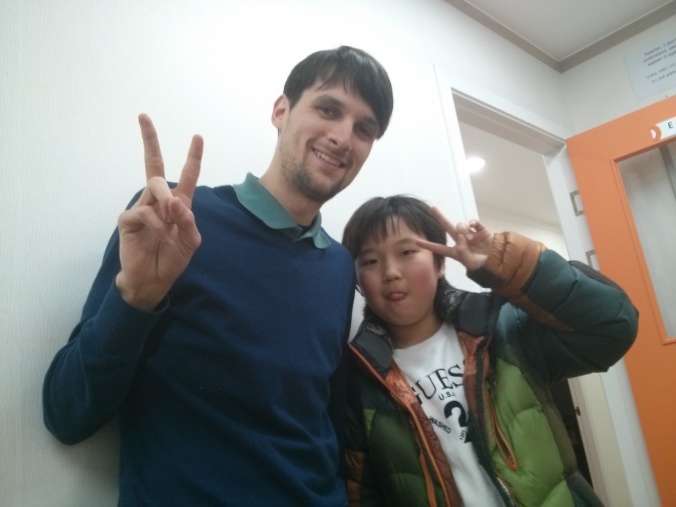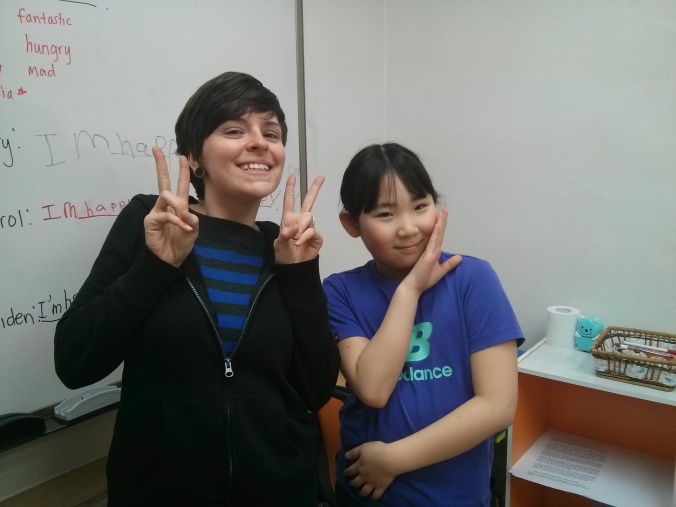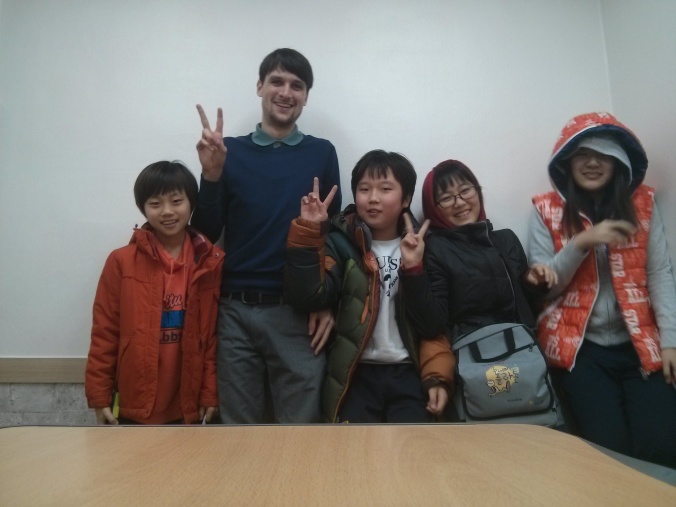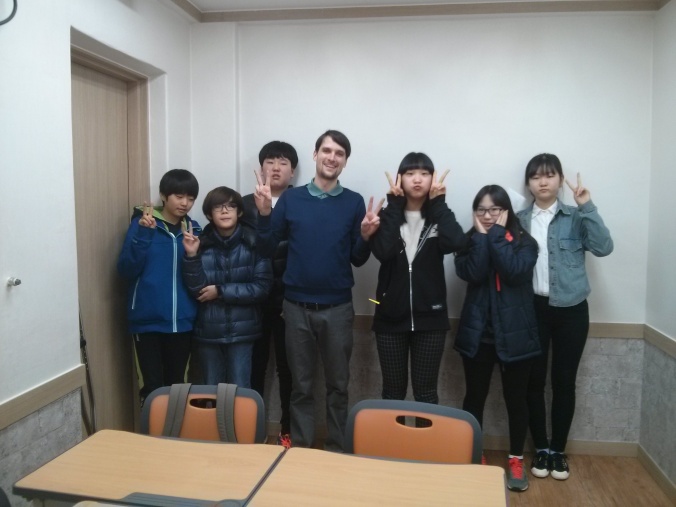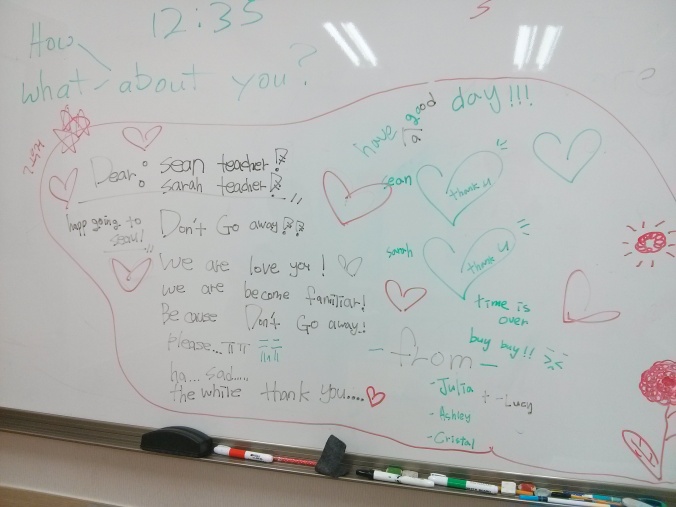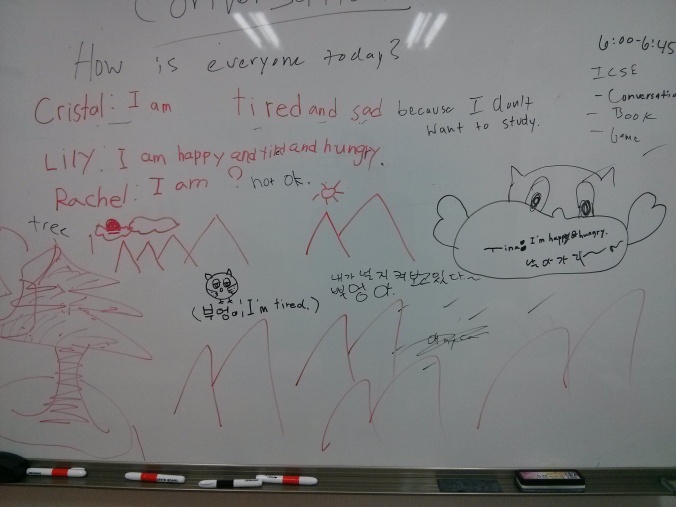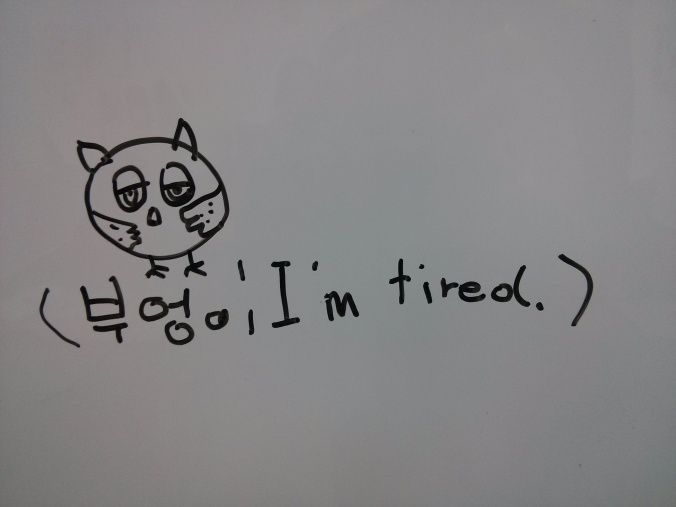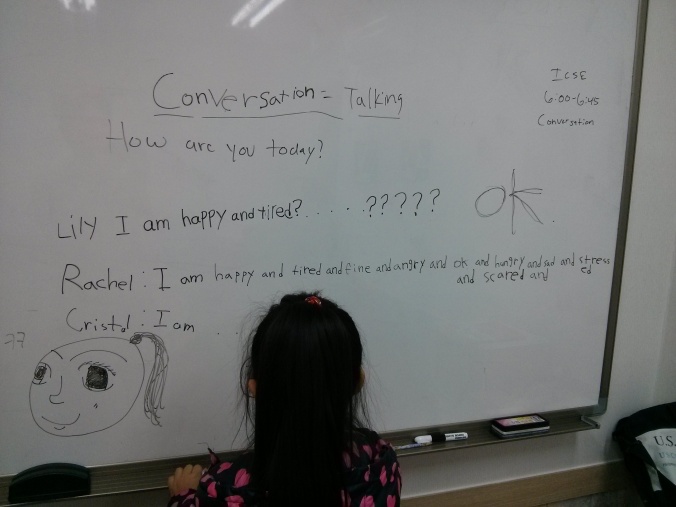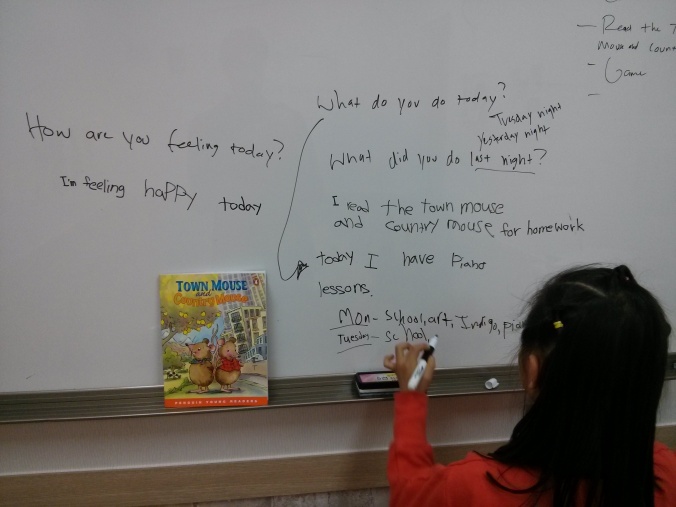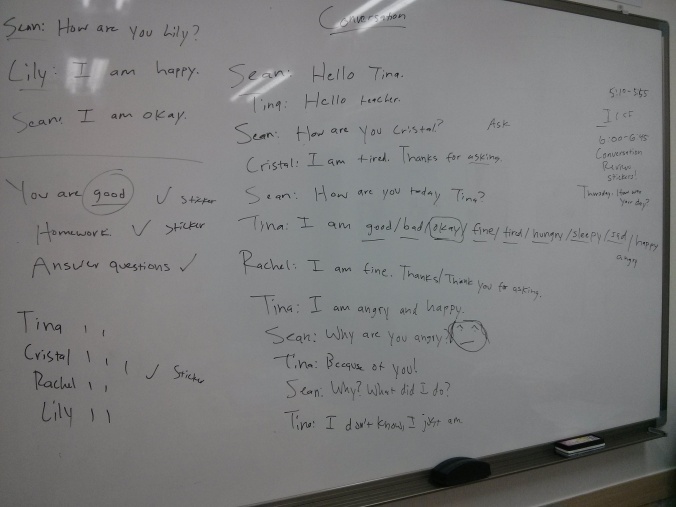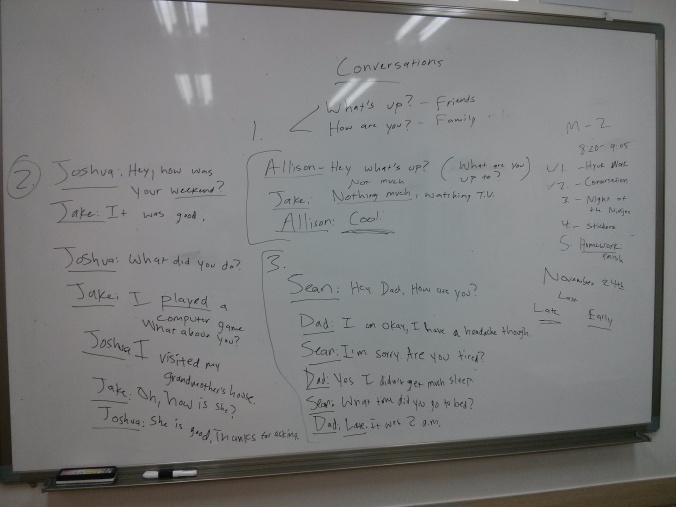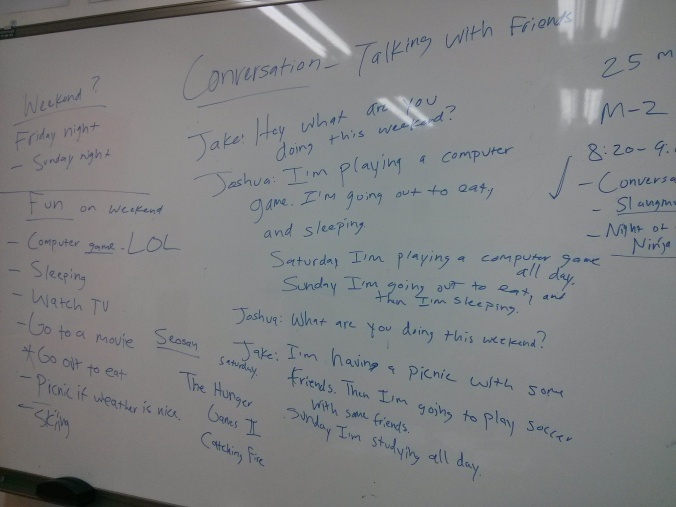In episode #72, I tell my kindergarten students I am leaving and give a tour of the Hagwon I taught at.
Teaching
Episode #70 – February 2015
In episode 70, the Jamsil mall has massive TV screens on wires, I find an interesting space toilet, move out of our apartment, last student birthday, and my kindergarteners graduate.
Kindergarten Writing Presentations: “Halloween”
Kindergarten Writing Presentations: “My Favorite Animal”
Every month my Kindergarten students write a presentation and present it to the class on the last Wednesday of the month. This month’s theme was “My Favorite Animal.” I thought it would be interesting to show the students different writing styles. They had to write 6 sentences and include an animal and 2 reasons why they liked them.
Hagwon Pros and Cons
Hagwons/Academies are the most common job offer in Korea. We’ve now been in Korea for about a year and have worked at two hagwons and met dozens of other foreigners who work in hagwons. We thought we’d compile a list of the typical pros and cons of working at a hagwon.
We’ll start with Cons. If you can get through them to read the Pros then you’re probably gonna be fine.
Cons
1. Long hours or late hours.
The typical schedule is either 9:30-6:30 or 2:00-10:00. Now that honestly is the same as most jobs back in America that I’ve had. But keep in mind you work with children and will be talking all.day.long. It’s incredibly draining. Which leads to the next point.
2. Very little vacation time.
You will only get 2 week long vacations and you don’t get to pick the dates. Plus a few long weekends thanks to national holidays. That’s it. Better not try to use those sick days as personal days either. I didn’t think much of this til now. I’m tired a lot, all the time, and miss being able to plan my vacations. I worked at a preschool in America, very similar to a hagwon, and we had substitutes. So we could request extra days off when we needed it. Which happens when you work with kids all day. That is not gonna happen in a hagwon.
3. Stress and worry.
If you’re not stressed and worried then you work at an A plus school. But there is almost always something to stress and worry about. If it’s not those typical hagwon bosses skimping on pay and benefits then it’s overbearing parents who have incredibly high expectations. We have had a constant level of stress since beginning work in Korea. It gets old, but it never goes away.
4. Cultural differences.
The anthropologist in me doesn’t want to write this. It seems ethnocentric. But Sean said it’s important for people to know.
Management styles and employee expectations are quite different from America. Your boss is likely to be both demanding and indirect. Explaining or defending yourself is not customary. That’s been hard to adjust to. And in a hagwon you usually work closely with a boss of some sort, whether it’s the actual director or a head teacher. Be prepared for lots of critique, very little positive feedback, and a difficult time asking for things/help/etc.
Bonus:
My bonus con is that I feel like I’m contributing to a negative, counter intuitive education system. I feel very sorry for my kids. They have longer school days than I do. And their told to pass tests, not learn real skills. It’s kinda depressing to be part of that.
Pros
Okay, you made it.
1. Choices
When you decide to work at a hagwon, you will be able to pick the exact school/contract you want. With public schools and universities you can’t be as choosy. So you’ll be able to do dozens of interviews, read a million contracts, and pick the one you like the most.
2. Pay
Pay is a definite plus and you can negotiate this. The longer you’re in Korea the higher your salary.
3. Simple work
I just had this talk with a friend. I decided this phrase sums up hagwons pretty much perfectly: It isn’t easy, but it’s simple. Nothing I do taxes my intellectual abilities. The work is simple. Writing lesson plans, teaching, grading, and assessing. Same thing every day. The routine is something I can count on.
Bonus:
I genuinely enjoy being around kids. Especially my kindergarten students. They are really cute. And some students are a lot of fun to be around. They can make a shitty day feel better with their little kid witticisms. Even if their shitty attitudes are the reason you have a bad day other times.
Both lists could be expanded. But I think this is a good start.
Trust me when I say there are a variety of hagwons and experiences here in Korea. There are plenty of happy, content, angry, depressed, whatever, hagwon teachers out there. A lot of how you feel about your job is perspective. But at the same time there are forces you can’t control. I think knowing these things about hagwons and realizing you can’t change some things will help in adjusting to a new job in a new country.
And if you do find yourself in a hagwon, good luck. I hope you get to be one of those happy teachers with a good experience. Korea sure could use more of those stories.
Leaving Sinpyeong
Episode #28 – Elementary Level 2: What is your Favorite Animal?
In episode #28, we discuss our favorite animals.
Episode #24 – Middle School Level 2 Conversation
In episode 24, my middle school level 1 class work on their conversation skills in the classroom.
Conversation
About a month and a half ago Sarah and I started adding a little bit of conversation into the beginning of the lesson before moving into the work in the book.
It has worked amazingly well and the students are definitely improving their speaking skills.
There are many ways to approach this:
In my middle school classes and upper level classes, I ask the students directly “How are you today?” or “How is everyone today?” or “How are you feeling?”
and write down what they say with correct tenses in sentence form. Then I have my students read it back out loud.
In my lower levels I let one of my students write it out on the board and now I have a class where they love to do this. Writing not only helps the students with spelling, but it helps them sound out the words when they write it and then speak it.
As you can see, the students love to draw and write how they feel.
Another fun thing to do is count and keep a tally of how many times the students use a certain word. In the example below my students used happy 4 times, so every student used it once. So at the end I say “Everyone is happy today.” This also shows the students how often they use the same word.
My classes are now answering questions such as “What did you do last night?”
You can direct conversations with students:
It also works great with upper level students because you can have the students have conversations with one another.
Ask questions like “How was your weekend?” and “What are you doing this weekend?”
My conversation sessions at the beginning usually last 5-10 minutes with lower levels (depending on class size). Any longer and the lower level students start getting silly. It can last up to 15 minutes with upper level as it engages them to use a lot of words and form sentences which will take some time.
It may help with lower level students to print out a sheet with the names of emotions and pictures to coincide with them. Google translate is your friend as they will know words such as embarrassed, jealous, shy, proud, etc.
But this helps the students break out of the “I am fine” zombie prompt.
I take pictures of my board all of the time so I may try to start incorporating some classroom oriented posts.
Meet Rin
On New Year’s Eve we picked up Sarah’s friend Rin from the airport.
She is in Korea looking for a job as an English teacher.
She is currently interviewing for positions.
If you know any schools that are hiring, or any great neighborhoods to live in, please email us or leave information in the comments below.
Thanks!

